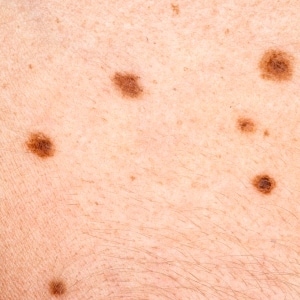Signs and Symptoms
- Basal cell carcinoma, most of which occur on the head or neck
- Nodular: pearly pink or white, dome-shaped lesion
- Superficial: scaly plaques with raised, pearly white borders
- Micronodular and infiltrative: like nodular subtype but more malignant
- Morpheaform: firm, yellowish, ill-defined mass
- Squamous cell carcinoma, found on backs of hands and forearms and the head and neck
Firm, smooth or scaly raised lesion, often ulcerated
The “ABCDE guide” is often used to describe melanoma characteristics
- Asymmetrical shape
- Borders that are irregular
- Color that is not the same all over
- Diameter larger than a pencil eraser
- Evolving in shape, size or color
Diagnosis
Skin cancers are diagnosed based on physical exam, patient history, and a variety of diagnostic techniques, including biopsy of skin and lymph nodes, dermoscopy, and imaging tests if the cancer has spread.
Conventional Treatment
Treatments for non-melanoma skin cancers include Mohs microsurgery (which presents the best cure rates, lowest recurrence rates, and leaves the smallest surgical wounds), electrodessication and curettage, cryosurgery, and radiotherapy.

